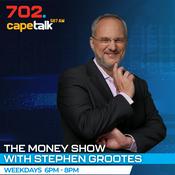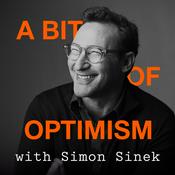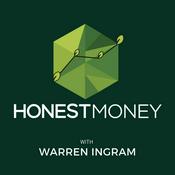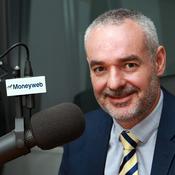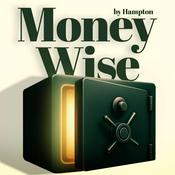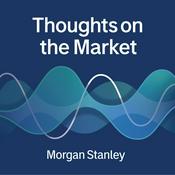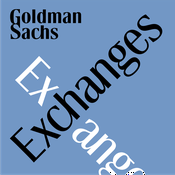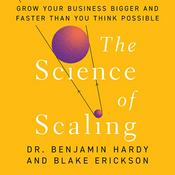Available Episodes
5 of 397
- China Conversations: AI momentum and policy tailwinds into 2026Chinese equities are entering 2026 on a strong footing, with policy tailwinds from the upcoming Five-Year Plan expected to sustain momentum despite recent consolidation. While tech-led rallies have dominated, attention is shifting toward domestic consumption as policymakers prioritise demand-side reforms—a potential turnaround for lagging consumer sectors if stimulus materialises.Meanwhile, ongoing concerns over stretched valuations in US tech and AI names underscore the case for diversifying into non-US markets, such as China and Japan. Structural drivers, including a weaker U.S. dollar and gradual yuan appreciation, add to the appeal. On commodities, strong fundamentals and AI-driven demand for industrial metals signal further upside, building on this year’s broad-based rally in materials.This episode is presented by Richard Tang, Head of Research Hong Kong at Julius Baer and Hong Hao, Managing Partner and CIO of Lotus Asset Management Ltd.--------26:30
- Staying disciplined when markets test your resolveAs 2025 draws to a close, investors are reflecting on a year that tested their emotional discipline – from Liberation Day tariffs to geopolitical events that sent markets into turmoil. What separated those who thrived from those who struggled? In this episode of the Beyond Markets Podcast, Helen Freer sits down with Yves Klenk, Head of Client Coverage and Advisory at Julius Baer, to discuss what worked well and what worked less well this year, why resisting the urge to react emotionally was crucial, and what lies ahead for 2026. They explore the ongoing AI story and how to diversify exposure along the value chain, the case for reducing USD concentration, and why currencies like the Australian dollar and structured products deserve a closer look as investors position for the year ahead.(00:11) - Introduction (00:53) - The role of Client Coverage and Advisory (01:37) - What worked well in 2025 (03:28) - What didn't go according to plan (04:42) - Why 2025 was so tough to navigate (06:26) - Can the AI story continue in 2026? (08:56) - Reducing USD exposure without sacrificing yield (11:19) - Three levels of diversification (12:56) - How to deploy fresh capital now (14:49) - Closing remarks Would you like to support this show? Please leave us a review and star rating on Apple Podcasts, Spotify or wherever you get your podcasts.--------16:19
- The Week in Markets: Two technical indicators suggest further strong equity gains next yearADP’s tally of 120,000 small firm job losses in November, and a decline in September Core PCE inflation, both help the case for a rate cut at the Fed’s meeting this Wednesday. On the markets front, Wall Street strategists are forecasting an average of 9% return for the S&P 500 index next year. Two technical indicators suggest an even larger return is probable.Meanwhile, it’s almost impossible to keep up with all that’s going on in the world of Artificial Intelligence, but what’s clear is the stock market favours AI adopters. Interestingly, the share prices of companies citing AI on Q3 conference calls have returned 14% on average year-to-date, vs. an average return of 6% for those that didn’t cite it.--------15:50
- The Week in Markets: Lower rates, higher precious metals, and the “Holy Grail” of Artificial General IntelligenceSigns of a slowing economy, and speculation of a very dovish new Federal Reserve chairman in May 2026, are behind the futures market pricing in substantial rate cuts over the next year. Historically, substantially lower rates weaken the dollar and boost precious metals. Silver has made a new high and has formed what is arguably the most bullish technical pattern, William O’Neil’s “cup and handle” formation. On the technology front, Alphabet's low-cost semiconductors present unexpected competition for Nvidia. Things like that will determine the performance of technology companies’ share prices for the foreseeable future. Longer term, the “Holy Grail” that technology companies seek is Artificial General Intelligence - AI that thinks like a human. Its impact to humanity could be very beneficial, or deeply detrimental.--------11:36
- Sanaenomics and a new era for Japan’s economyJapan is undergoing a profound economic transformation under its first female Prime Minister, Sanae Takaichi, whose growth-focused "Sanaenomics" policy drives investment in critical areas such as infrastructure, tech and energy. After decades of deflation, inflation has reached 2.9%, supported by a robust 5% wage growth, boosting consumption and corporate earnings.In this episode, Ayako Lehmann speaks with Louis Chua, Asia equity research analyst at Julius Baer, about the investment landscape for Japan, against a backdrop of structural corporate reforms, strengthening earnings, and rising shareholder returns, and explores the opportunities and risks to watch ahead.(01:25) - What can we expect from Sanae Takaichi’s agenda? (02:25) - Japan’s shifting economic landscape (03:40) - Green shoots in Japan corporate reform (05:21) - Growing influence of activist investors (06:50) - Takeaways from Q3 earnings (08:39) - Diverging paths between small and large caps (10:17) - How does the weakening Yen impact Japanese businesses? (11:31) - Risks to watch (13:33) - Rising Japanese bond yields – a cause for concern? (15:07) - Are Japanese bonds finally attractive for international investors?--------17:05
More Business podcasts
Trending Business podcasts
About Beyond Markets
“Beyond Markets” by Julius Baer is a series featuring conversations with experts to share recent market developments, key insights, and strategic inputs from around the globe. In each episode, we cut through the noise to offer practical advice and macro research on today’s shifting economic and market landscape.
The information contained in this podcast is marketing material. Opinions expressed do not constitute independent financial/investment research, investment advice, or an offer to buy or sell securities by Julius Baer. Please refer to www.juliusbaer.com/legal/podcasts for important legal information prior to listening to this podcast.
Podcast websiteListen to Beyond Markets, Founders and many other podcasts from around the world with the radio.net app

Get the free radio.net app
- Stations and podcasts to bookmark
- Stream via Wi-Fi or Bluetooth
- Supports Carplay & Android Auto
- Many other app features
Get the free radio.net app
- Stations and podcasts to bookmark
- Stream via Wi-Fi or Bluetooth
- Supports Carplay & Android Auto
- Many other app features


Beyond Markets
Scan code,
download the app,
start listening.
download the app,
start listening.


